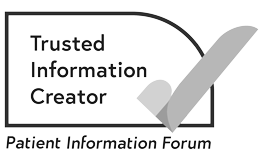The anus
What is the anus?
The anus is the opening at the end of the large bowel. It is where you pass poo (stools) out of the body. The bowel (colon and rectum) and anus are part of the digestive system.
Food passes down the gullet (oesophagus) to the stomach, where digestion begins. It then enters the small bowel, which absorbs nutrients and minerals.
The digested food then moves into the colon, which absorbs water. The colon also contains bacteria which breaks down the food into waste matter (poo). The colon moves the waste into the rectum.
Nerves and muscles in the rectum help to hold on to the poo until you are ready to pass it through the anus.
Parts of the bowel
Related pages
The anal canal
The anal canal connects the rectum to the anus. The anal canal is about 3 to 4cm (1 to 1½ inches) long. The area where the anus opens at the lower end is called the anal margin or anal verge.
The anus has a ring of muscle called the external sphincter. This muscle helps to control when you empty your bowels (poo).
The anal canal
The walls of the anal canal are lined with cells called squamous cells. Nearly all anal cancers develop in these cells.
The anal canal meets the rectum in an area called the transitional zone. The walls in the transitional zone are lined with squamous cells and glandular cells. Glandular cells make mucus. This helps poo pass through the anus.
Related pages
The lymphatic system
The lymphatic system helps protect us from infection and disease. It is made up of lymphatic vessels and lymph nodes.
Sometimes anal cancer cells can spread to the lymph nodes close to the rectum and in the groin.
We have more information about bowel cancer and the lymph nodes.
About our information
This information has been written, revised and edited by Macmillan Cancer Support’s Cancer Information Development team. It has been reviewed by expert medical and health professionals and people living with cancer.
-
References
Below is a sample of the sources used in our anal cancer information. If you would like more information about the sources we use, please contact us at informationproductionteam@macmillan.org.uk
S Rao, MG Guren, K Khan et al. Anal cancer: ESMO Clinical Practice Guidelines for diagnosis, treatment and follow-up. 2021. European Society of Medical Oncology. Available from: www.esmo.org/guidelines/guidelines-by-topic/esmo-clinical-practice-guidelines-gastrointestinal-cancers/anal-cancer [accessed January 2023].
O Dahl, MP Myklebust, JE Dale et al. Evaluation of the stage classification of anal cancer by the TNM 8th version versus the TNM 7th version. 2020. Acta Oncologica, 59(9), 1016–1023. Available from: www.tandfonline.com/doi/full/10.1080/0284186X.2020.1778180 [accessed December 2022].
Date reviewed

Our cancer information meets the PIF TICK quality mark.
This means it is easy to use, up-to-date and based on the latest evidence. Learn more about how we produce our information.
The language we use
We want everyone affected by cancer to feel our information is written for them.
We want our information to be as clear as possible. To do this, we try to:
- use plain English
- explain medical words
- use short sentences
- use illustrations to explain text
- structure the information clearly
- make sure important points are clear.
We use gender-inclusive language and talk to our readers as ‘you’ so that everyone feels included. Where clinically necessary we use the terms ‘men’ and ‘women’ or ‘male’ and ‘female’. For example, we do so when talking about parts of the body or mentioning statistics or research about who is affected.
You can read more about how we produce our information here.





